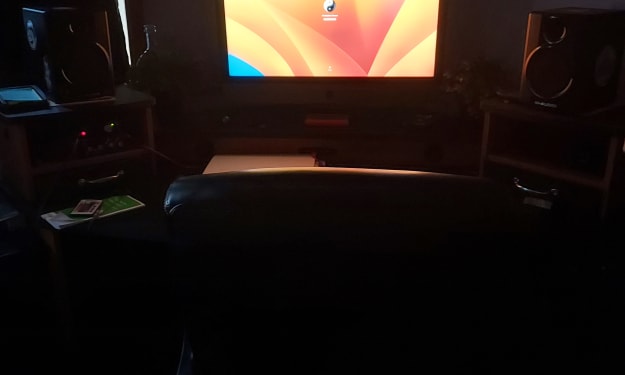
He used a simple glass tube to mimic the sky, with white light representing the sun at the end. He found that when he filled the tube with smoke, the lamp would appear blue on one side and red on the other. If both sides of the pole looked like blue light, they would disappear, and then the light that was seen at the end would be embarrassed as it passed through the tank.
Blue light can be redirected in many different ways by other wavelengths, which are less scattered. Our eyes are probably more sensitive to blue light because most sunlight from Earth's atmosphere is blue than violet. This is because light travels shorter in space than in the USA, which means it distributes less blue light.
In the lower atmosphere, tiny molecules of oxygen and nitrogen emit short wavelengths like light blue and violet over long waves such as red and yellow light. Aerosols (terpenes in the vegetation) react with atmospheric ozone and form tiny particles of less than 200 nm that transmit blue light. Forest fires and volcanic eruptions fill the atmosphere with fine particles between 500 and 800 nm, which are the right size to disperse the red light.
For particles such as air molecules with small wavelengths of visible light, the difference is enormous. The tiny invisible particles that make up our atmospheric molecules such as nitrogen, oxygen, water, carbon dioxide, and argon transmit light at very short wavelengths. They do this because the light itself is shorter than its length, so the light is better to disperse.
In fact, light complies with the law known as Rayleigh Scattering, which teaches us that the light of violet, the shortest range of human vision, is nine times faster than the red light, with a much longer limit.
The color purple or blue has a very short distance, while the red light is long. The shortest length corresponds to the shade of blue, so we look at the blue sky.
When light emanates from the sun, it is the waves of various waves that travel through space. When the sun is low in the sky at sunrise and sunset, light travels through the earth's atmosphere. Light does not disperse and can pass through our atmosphere and progressively reach our eyes.
The red color of the sunset is because the sunlight travels through the atmosphere to reach our eyes. Roy's sun is usually low on the horizon, which is why we see the sun at noon.
When light arrives, it is released over short distances that scatter, leaving only long wavelengths of direct light, which is why sunlight has a red tone. The red light tends to be longer than the scattering of blue light.
As the blue light is more diffused than other colors, it travels in short, small waves. More violet light enters the atmosphere, blue light mixes with other colors.
Blue light is scattered on all sides of the earth's atmosphere by tiny molecules in the air. Solar radiation reaching the atmosphere disperses through all the gas particles in the atmosphere. The tiny gas molecules that make up our atmospheres, such as oxygen and nitrogen, emit a green light source on all sides, creating the effect we see in the blue sky.
We can think of light as strong waves of varying colors and tides. The light from the sun appears to be white, but in reality, there are many different colors and we can see how they spread like a rainbow. Some people think that the sky is blue because sunlight is reflected in the sea and not in the sky.
When sunlight enters our atmosphere, air molecules emit green light and allow red light to pass over them. These are invisible waves that cause the sun to burn, allowing us to heat up what is leftover and listen to the radio in the form of light. When we look at the sky, like the sun, we see how light is directed away from our galaxy.
This is because the blue light is red, so the sky appears blue. More light enters the atmosphere in blue than violets so that our eyes are more sensitive to blue light than violet, which is why the sky will appear blue.
The long red energy of sunlight passing through the atmosphere spreads much that comes to our eyes, but this is because blue light is not. In a cloudy sky, there is no direct sunlight, so the light produced is diffused.
This experiment explains why the sky appears red at sunset. This is because large particles of dust absorb the length of short waves of blue light and disperse the remaining color, coloring the Martian sky during the day. As a result, when the human eye looks at the sky outside the direct sunlight, it sees a blue sky.
This practice is called Raleigh diffusion and refers to the diffusion of electromagnetic (light) radiation produced by particles with small wavelengths. Light waves are dispersed differently than light wavelengths, depending on the particle size.
About the Creator
saurab sharma
Hello there, I am a content writer and a freelancer,





Comments
There are no comments for this story
Be the first to respond and start the conversation.